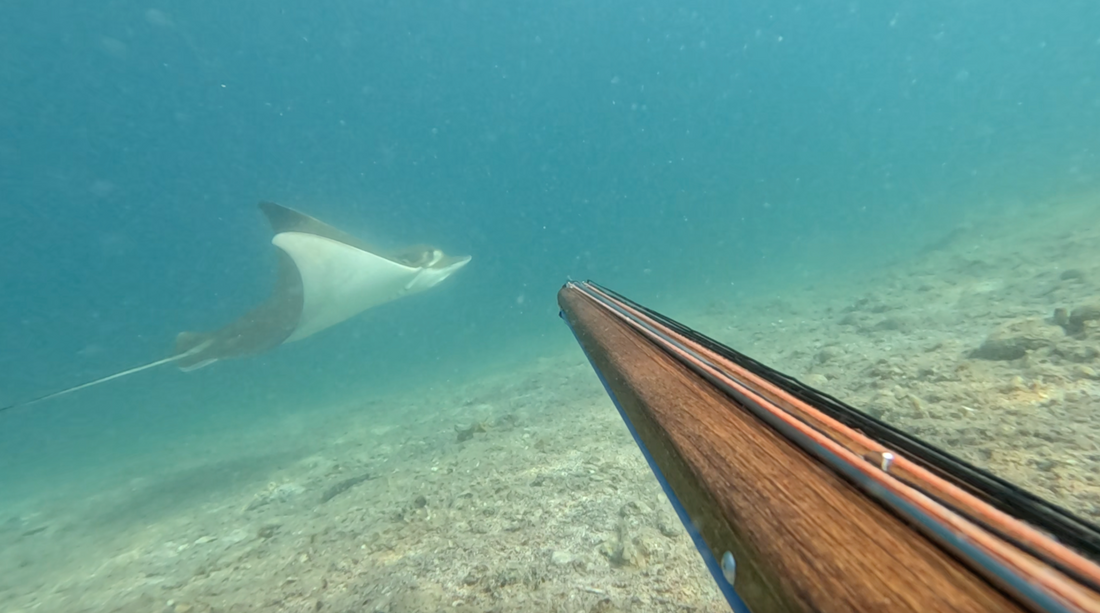
The Common Eagle Ray (Myliobatis aquila): Biology, Ecology, and Conservation
Share
The common eagle ray, Myliobatis aquila, is a striking and ecologically significant species of cartilaginous fish in the family Myliobatidae. Found across the eastern Atlantic, Mediterranean, and parts of the Indian Ocean, this elegant ray plays a vital role in benthic ecosystems. Despite its grace and resilience, M. aquila is now listed as Critically Endangered by the IUCN due to habitat pressures and overfishing.
Morphology and Identification
With a wingspan reaching up to 183 cm and a disc width of about 80 cm, the common eagle ray has a rhomboidal body, dark dorsal coloration, and white ventral surface. Its long, whip-like tail lacks a caudal fin but carries a venomous spine near the base. This spine features 66–72 serrations and a venom gland that can deliver a sting—harmless to most humans but highly effective against predators.
The species has unique dental adaptations: flattened hexagonal plates arranged in a mosaic pattern that allow it to crush mollusk shells with ease.
Distribution and Habitat
M. aquila ranges from the British Isles to South Africa and into the western Indian Ocean. It prefers shallow coastal waters under 50 m but has been recorded at depths of up to 800 m. The ray often inhabits sandy or mixed substrates, and is known to seasonally enter lagoons and estuaries, particularly during reproductive phases.
Feeding Ecology
An adept benthic predator, the eagle ray feeds primarily on crustaceans and mollusks such as bivalves, gastropods, and polychaete worms. It uses its broad pectoral fins and snout to dislodge prey from sediment, then crushes them with its dental plates.
Diet varies by location:
- In the Sea of Marmara, mollusks and teleost fish dominate the diet.
- Around the Azores, it prefers Calliostoma lusitanicum and Stramonita haemastoma.
Larger individuals tend to include more fish in their diets, showcasing ontogenetic dietary shifts.
Reproduction and Life Cycle
The common eagle ray is ovoviviparous. Embryos develop internally, first nourished by yolk and later by nutrient-rich uterine fluids secreted by maternal tissues called trophonemata.
- Gestation lasts 6–8 months.
- Females give birth to 3–7 pups per cycle.
- Sexual maturity is reached at 60–70 cm for females and 40–50 cm for males.
Juvenile development shows gradual maturation of reproductive organs, and rare cases of non-functional hermaphroditism have been documented.
Parasites and Bioaccumulation
Common parasites include:
- Entobdella diadema (skin)
- Monocotyle myliobatis (gills)
Although relatively low in mercury and methylmercury, the species shows higher arsenic levels compared to pelagic rays—likely due to its benthic diet.
Human Interaction
Although equipped with a venomous spine, the species poses minimal risk to humans. It is occasionally caught as bycatch in trawling and artisanal fisheries.
- ~79% of individuals caught in the Adriatic are released alive.
- The species is popular in recreational SCUBA and underwater photography, adding ecotourism value.
- Its meat is sold smoked or dried in some regions and used for fishmeal or oil.
Conservation Status
Despite its broad distribution, the common eagle ray is in steep decline, especially in the Mediterranean and northeastern Atlantic.
- Formerly common as skate/ray bycatch, it is now rare.
- It is considered Critically Endangered by the IUCN.
- Localized populations (e.g., in the Gulf of Lion) have nearly disappeared due to overfishing.
Some relatively stable populations exist along parts of West Africa, where artisanal fishing pressure is lower.
Final Thoughts
The common eagle ray is a fascinating species at the intersection of biology, ecology, and conservation. Its unique morphology, ecological role, and declining numbers highlight the urgent need for protective measures, habitat preservation, and sustainable fishery practices.
